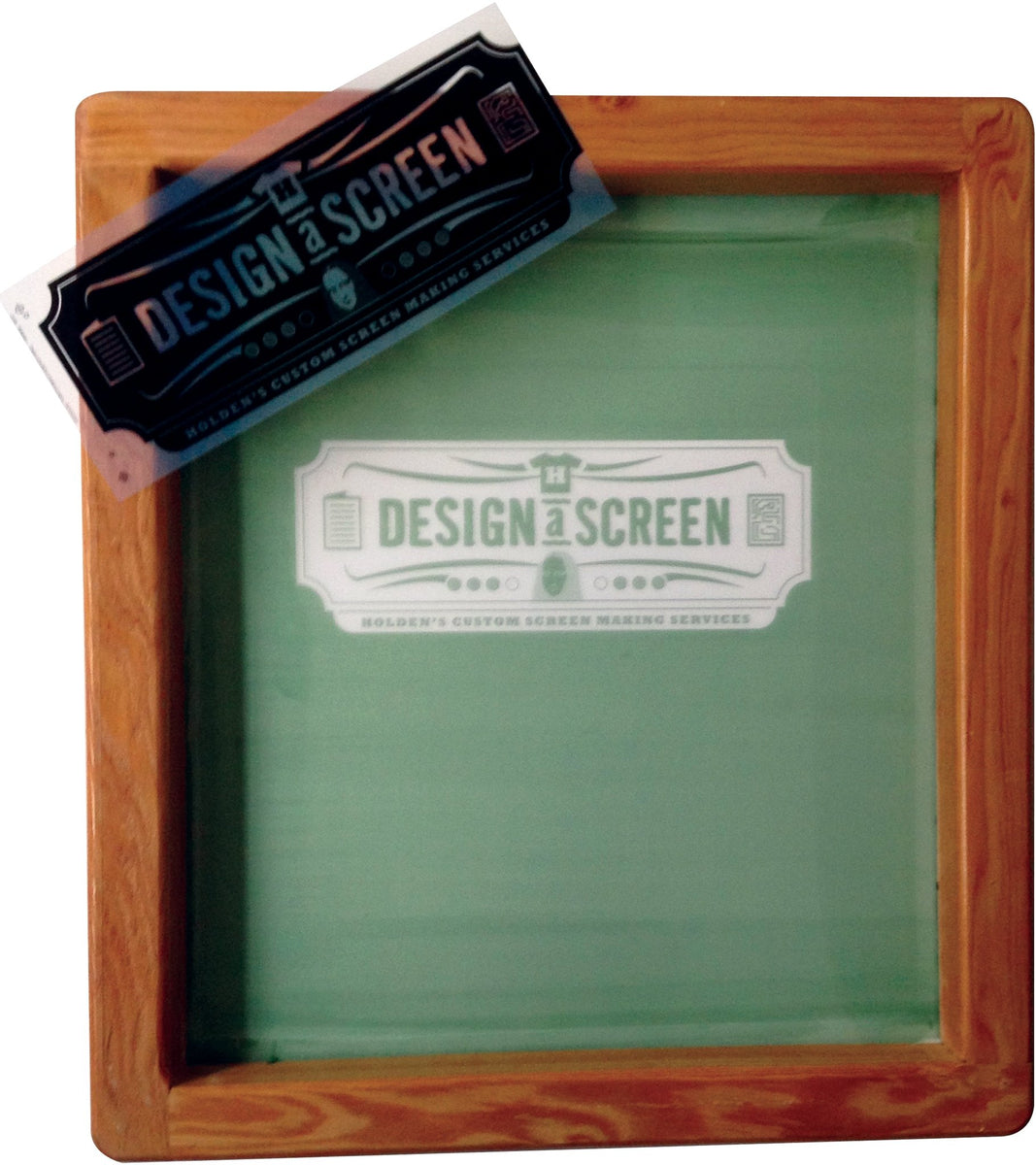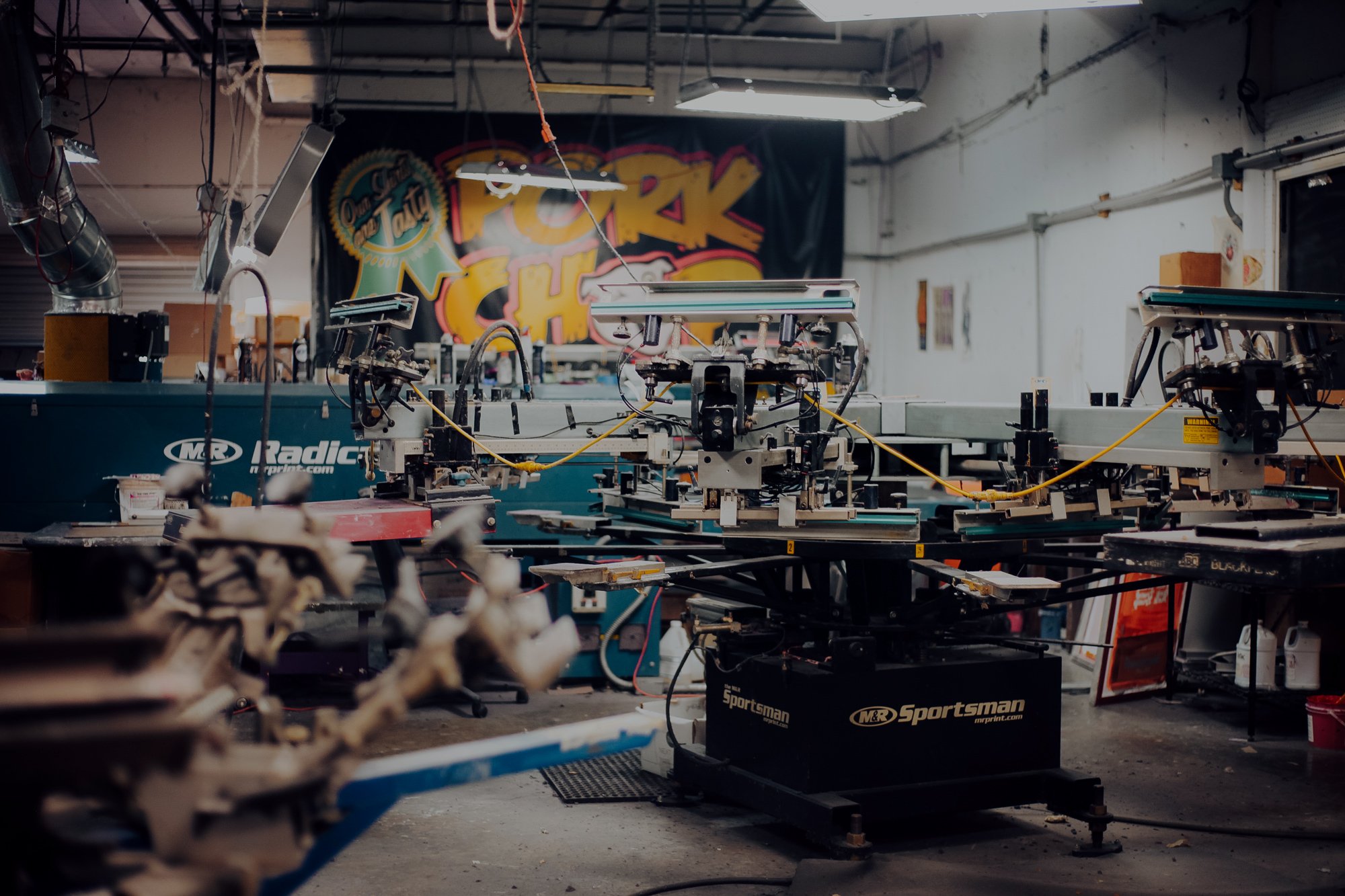Vintage Style Silk Screen Printing for Retro Fashion
Vintage Style Silk Screen Printing for Retro Fashion
Blog Article
Screen Printing Uncovered: Whatever You Need to Learn About T-Shirt and Garment Printing Methods
Display printing is a remarkable technique that combines art with method, using unlimited possibilities for creativity. Prepared to discover the essential elements that make display printing an art form?
The Fundamentals of Screen Printing: Exactly How It Works
When you plunge right into screen printing, you'll uncover it's both an art and a scientific research. At its core, display printing entails developing a pattern, or screen, that permits ink to pass with only in particular areas (screen printing kit). You start by picking your style and preparing your display with a light-sensitive emulsion. Once you reveal this solution to light, it sets, leaving your style as an adverse room.
Position the screen over the material, after that make use of a squeegee to press ink via the display onto the garment. Each step is important, and mastering them will raise your screen printing skills, transforming straightforward garments into unique, expressive items.
Kinds Of Screen Printing Methods
Once you comprehend the basics of screen printing, it's time to check out the different strategies that can elevate your layouts. One prominent approach is typical display printing, where ink is pressed through a stenciled display.
Another alternative is plastisol printing, recognized for its toughness and brilliant colors, making it a preferred for numerous brand names. Experiment with halftone printing to develop gradient effects and detailed designs.
Essential Devices for Screen Printing
To accomplish spectacular lead to screen printing, having the appropriate equipment is essential. First, you'll need a durable display printing frame, which holds the mesh that moves your design onto the garment. Next off, spend in high-grade squeegees; these are necessary for applying ink uniformly throughout the screen. You'll likewise call for an excellent direct exposure unit to develop your displays, as well as a washout cubicle for cleansing them after usage. A trustworthy warm source, like a conveyor clothes dryer or warmth press, is crucial for treating your prints to assure durability. Do not fail to remember a correct workspace, furnished with tables and storage for your materials. Finally, protective equipment, such as masks and gloves, will certainly maintain you risk-free from chemicals and inks. With the right devices, you'll be well on your method to creating professional-quality prints.
Choosing the Right Inks and Products
When choosing inks and materials for display printing, you require to consider the sort of ink that works finest for your task. Assume concerning material compatibility to ensure your designs look wonderful and last lengthy. Additionally, discover eco-friendly ink choices to make your printing procedure a lot more lasting.
Types of Screen Inks
Selecting the best display ink is important for attaining dynamic, durable prints that fulfill your project's requirements. There are numerous sorts of display inks to check out. Plastisol ink is popular for its versatility and convenience of usage, offering exceptional shade opacity on dark materials. Water-based ink, on the other hand, uses a softer feeling and is environmentally friendly, making it suitable for those looking to reduce their environmental effect. Release inks remove color from the fabric, resulting in a soft, classic look yet need specific handling. Specialty inks, such as glow-in-the-dark or metal, can include one-of-a-kind impacts to your layouts. Evaluate your task demands and choose the ink that aligns ideal with your preferred outcome.

Textile Compatibility Considerations
Recognizing material compatibility is vital for attaining top quality display prints, particularly since different materials respond distinctly to various inks. When picking inks, take into consideration the textile type-- cotton, polyester, or blends. For cotton, water-based inks function well, using gentleness and breathability. Polyester, on the various other hand, typically calls for plastisol inks for much better adhesion and lively colors. If you're publishing on blends, you might need to utilize a combination of both kinds. Constantly evaluate your inks on sample textile to assure they stick appropriately and preserve color integrity. Furthermore, remember that material weight and appearance can influence the last result, so selecting the best ink and product combination is vital for your task's success.
Eco-Friendly Ink Options
Environmentally friendly inks are coming to be a preferred choice for display printers who intend to reduce their ecological impact while maintaining high quality. When picking inks, consider water-based inks, which are much less damaging and less complicated to cleanse up contrasted to traditional solvents. These inks bond well with materials, supplying lively outcomes without poisonous chemicals. You may additionally explore eco-solvent inks that use less volatile organic substances (VOCs), making them a much safer alternative for both your health and wellness and the earth.
In addition, search for inks made from sustainable sources, such as soy or vegetable-based options. By picking the right inks and materials, you'll not only create stunning layouts yet likewise add to a more lasting printing procedure. Make the button, and your prints will certainly reflect your commitment to the atmosphere!
Preparing Your Style for Display Printing

File Style Demands
To assure your layout looks vibrant and sharp on material, you'll need to pay attention to file style requirements for display printing. Start with vector documents like AI or EPS, as they can be scaled without losing quality. If you make use of raster images, select high-resolution files, such as TIFF or PNG, ideally at 300 DPI. Stay clear of utilizing JPEGs, as they can shed clearness when resized. Make sure your design has a transparent background to avoid undesirable white edges on your prints. Maintain color modes in mind; CMYK is conventional for display printing, so convert your RGB designs appropriately - screen printing kit. By adhering to these standards, you'll establish your art work up for an effective print.
Color Splitting Up Methods
Color separation is a crucial step in preparing your design for screen printing, and mastering continue reading this it can significantly enhance your print top quality. You'll need to break your design into private colors, as each shade requires a check over here separate display during printing. This accuracy not only assures precise color representation but additionally improves the printing procedure.
Resolution and Size
Achieving the finest lead to display printing begins with guaranteeing your style has the best resolution and dimension. Preferably, your artwork needs to go to least 300 DPI (dots per inch) for sharp, clear prints. Your last item might look pixelated and unprofessional. if you use reduced resolution.
When it pertains to size, think about the measurements of your print location. Style your art work to match the last print size, ideally developing it in the real dimensions you'll be printing. In this manner, you'll stay clear of any unexpected scaling concerns.
Constantly inspect your layout in both vector and raster layouts. Vector graphics can be scaled without losing high quality, making them optimal for screen printing. Preparing properly will guarantee your style looks incredible on every garment!
Step-by-Step Screen Printing Process
Screen printing is a vibrant procedure that enables you to develop lively designs on numerous surfaces. To obtain started, you'll need a display, emulsion, and your selected ink.
After rinsing the unexposed emulsion, your display prepares. Set it up on your printing surface area and straighten your garment below it. Pour ink onto the screen and make use of a squeegee to push the ink with the pattern onto the fabric. Raise the screen very carefully and let the print dry. Ultimately, heal the ink utilizing warm to assure longevity. That's it! You have actually successfully display printed your design.
Tips for Successful Screen Printing Projects
While you're diving right into your screen printing projects, keep in mind that preparation is essential to success. Begin by collecting all your materials-- inks, squeegees, garments, and screens. A clean office assists prevent unwanted errors, so clean up before you begin.
Following, verify your artwork is high-resolution and effectively sized for your garment. Test your screen for correct exposure and tidy it extensively to avoid smudges. When blending your inks, adhere to the producer's standards to achieve the right uniformity.
During printing, apply even stress with your squeegee for consistent outcomes. Do not rush; take your time to verify each print meets your requirements. After printing, allow your garments dry completely before taking care of or packaging them.
Finally, always maintain an example of your help future referral. By doing this, you can examine your progress and enhance your strategies in time. Delighted printing!

Frequently Asked Concerns
For how long Does It Require To Establish a Screen Printing Task?
Establishing a screen printing work normally takes around thirty minutes to an hour. You'll prepare the screens, mix inks, and adjust journalism. The time varies based upon complexity and experience, so stay arranged!
Can I Publish on Different Material Keys In Making Use Of the Same Method?
Yes, you can publish on different fabric types utilizing the very same technique, however you'll require to change your settings and inks. Some fabrics soak up ink differently, so exploring guarantees the very best results for every material.
What Are Usual Mistakes to Prevent in Display Printing?
When display printing, prevent typical blunders like using the wrong ink, neglecting appropriate direct exposure times, or missing pre-press checks. Constantly examine your arrangement and keep tidy screens to guarantee quality results each time.
Just How Can I Effectively Tidy and Maintain My Display Printing Equipment?
To properly tidy and preserve your display printing tools, you ought to regularly wash displays with appropriate solvents, examine mops for wear, and assure all tools are stored dust-free and completely dry. Uniformity improves and stops pricey repairs efficiency.
Is Screen Printing Ecologically Friendly Contrasted to Various Other Techniques?
Display find out printing can be much more eco pleasant than other methods, especially if you make use of eco-conscious materials and water-based inks. By picking lasting materials and techniques, you minimize waste and lessen your effect on the earth.
Screen Printing Uncovered: Everything You Required to Know About T-Shirt and Garment Printing Techniques
At its core, display printing includes creating a stencil, or screen, that permits ink to pass with only in specific areas. Setting the display over the fabric, then utilize a squeegee to push ink through the display onto the garment. One preferred method is conventional screen printing, where ink is pushed with a stenciled screen.When selecting inks and products for display printing, you need to take right into account the type of ink that works ideal for your task.
Report this page